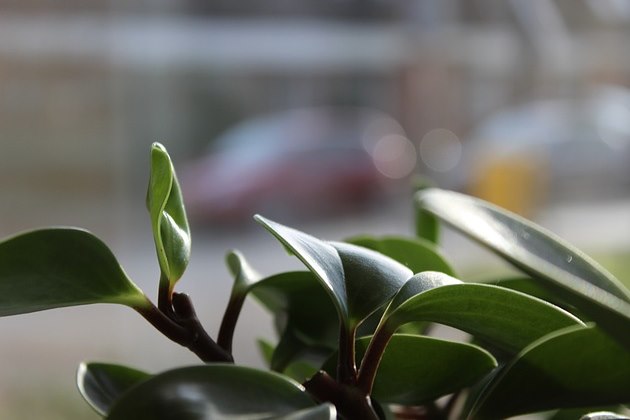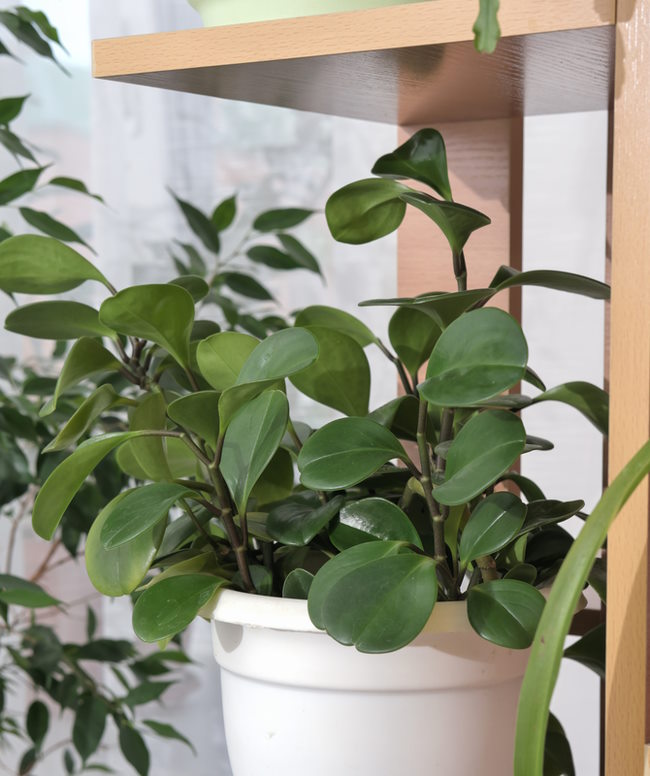Peperomia Obtusifolia - Baby Rubber Plant
Botanical Name: Peperomia obtusifolia
Baby Rubber plant is growing in popularity and it's easy to see why. Its thick, waxy leaves and upright growth habit give it this common name, though it is not related to the large Ficus plant.
It's a stand-out among your other houseplants, but this small Peperomia looks good on a table all by itself, too. Or take it to work with you. Because of its easy-going nature, this tropical evergreen also makes a beautiful office plant.

The rounded leaves are traditionally dark-green, although newer variegated types are the most sought-after. For the most handsome leaves, look for varieties marbled with golden yellow or creamy white.
'Variegata' is a popular cultivar, sporting leaves that start out mostly cream, then becoming more bright green with creamy edges as they age.
Problems with Peperomia Obtusifolia
Problems are few, however this jungle native will protest cold, wet conditions.
Dropped leaves? Temperatures below 55°F/13°C may cause the lower leaves to fall off.
Variegated leaves that turn green are not getting enough sunlight. If you don't have a spot near a window, a small grow light will work wonders.
Wilted leaves are likely from overwatering. Soggy soil will cause the roots to rot, but all you'll notice are the limp leaves. Use a pot with drainage holes to allow the excess water to escape. If you want to cover up a plain nursery pot, slip it into a cachepot (a decorate planter without drainage holes). I put small pebbles in the bottom of cachepots to keep the pot above the drainage water.
Notice dry, corky scabs under the leaves? That's also caused by overwatering. The problem is more common in winter, when growth has slowed and the plant doesn't drink up as much water. Cut back on watering. If you think you've hopelessly overwatered your plant, repot it right away in fresh potting mix.
It's normal for older leaves to die. But if you see a lot of dry, shriveled leaves, it may be caused by excess soluble salts from fertilizer. You can easily flush built-up salts by slowly pouring room-temperature water over the potting mix a couple times.
Watch for pests. Mealybugs, scale insects, and spider mites are the most common. Isolate an infested houseplant and treat it right away to prevent pests from moving on to your other indoor plants.
Wondering whether to repot? Peperomia obtusifolia can stay in the same small pot for a few years. If you like, you can repot in spring just to freshen the potting mix. Keep the potting mix loose -- don't pack it down because the roots need air as well as water.
 Peperomia Obtusifolia on shelf. Photo credit © Iuliia panova
Peperomia Obtusifolia on shelf. Photo credit © Iuliia panovaPeperomia Obtusifolia Care Tips
Origin: South America
Height: Up to 10 in (25 cm)
Light: Bright light, but no direct sun. Small leaves or leggy stems indicate the plant is not getting enough light. Variegated types will lose their color in low light.
Water: Keep potting mix lightly moist spring through fall, when plant is actively growing. Allow surface to dry out before watering again. Overwatering will lead to crown rot, which can kill this houseplant. Water sparingly in winter, when growth is slower.
Humidity: Moderate to high (at least 50% relative humidity). Set plant on a tray of wet pebbles or use a cool-mist humidifier to give this tropical native the moisture it craves. Brown leaf tips are a sign of dry air.
Temperature: Average room temperatures (65-75°F/18-24°C). Cold air may cause its leaves to fall off, though it will tolerate a minimum of 60°F/16°C in winter.
Soil: Peat moss-based mix, such as African violet potting mix.
Fertilizer: Feed every 2 weeks spring through fall with a balanced water-soluble fertilizer diluted by half.
Propagation: Take stem tip cuttings in spring and early summer. Peperomia obtusifolia roots easily in moist perlite or potting mix.


